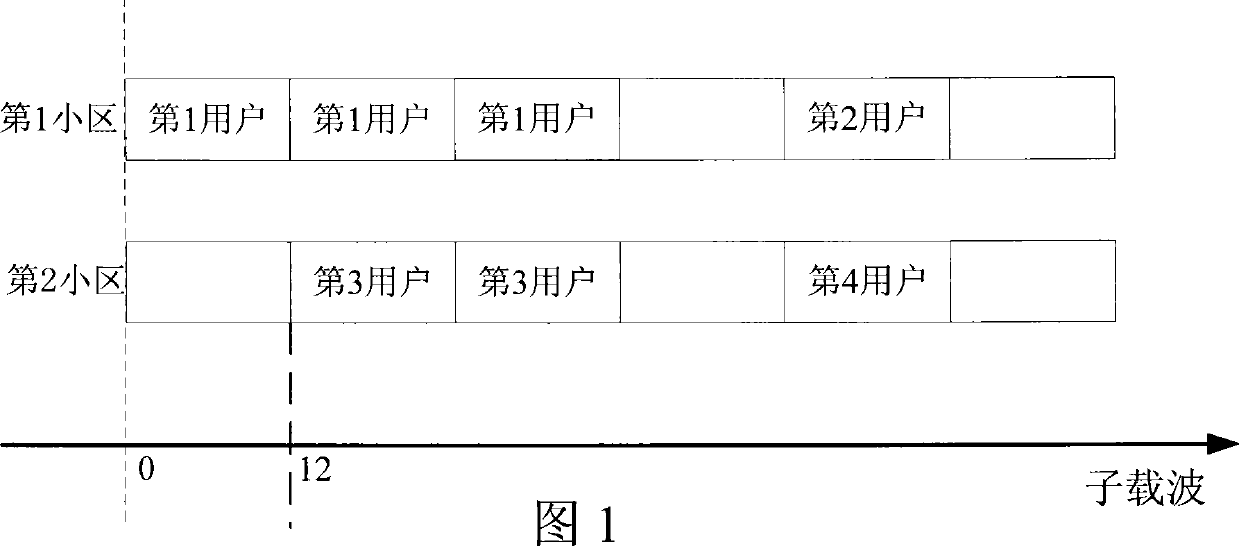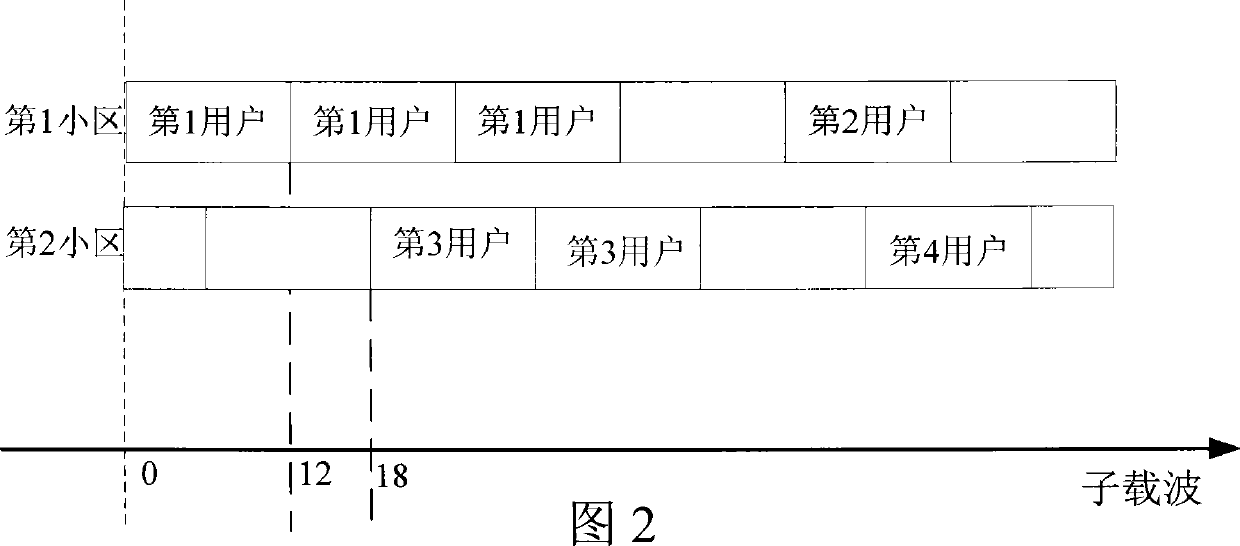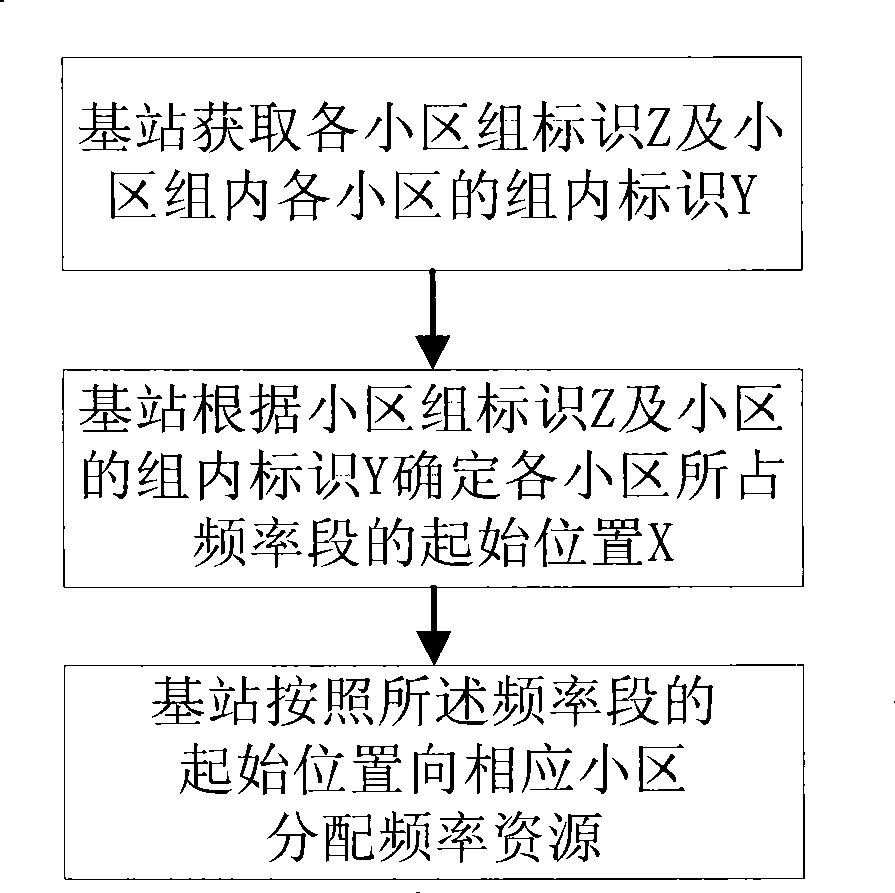Method for randomizing neighborhood cell interference in OFDM system
An adjacent cell interference and randomization technology, applied in the field of OFDM systems, can solve the problems of high complexity and demand, and achieve the effect of improving the degree of randomization and improving the anti-interference performance.
- Summary
- Abstract
- Description
- Claims
- Application Information
AI Technical Summary
Problems solved by technology
Method used
Image
Examples
Embodiment 1
[0034] Embodiment 1, the starting positions of the frequency segments occupied by the RBs allocated by the base station to adjacent cells are different, so as to realize the randomization of adjacent cell interference.
[0035] As shown in Figure 2, cells 1 and 2 are adjacent cells, and each RB consists of 12 subcarriers. For cell 1, the base station allocates 3 consecutive RBs to its first user, and the frequency segment occupied by RBs The starting position of the cell is the 0th subcarrier, the base station allocates 1 RB to its second user, and the starting position of the frequency segment occupied by the RB is the 48th subcarrier; and for the second cell, the base station allocates 1 RB to its third user 2 connected RBs are allocated, and the starting position of the frequency segment occupied by the RB is the 18th subcarrier, the base station allocates 1 RB to its fourth user, and the starting position of the frequency segment occupied by the RB is the 54th subcarrier C...
Embodiment 2
[0045] Embodiment 2, the method for realizing the randomization of adjacent cell interference based on frequency hopping in the OFDM system, this method realizes the randomization of adjacent cell interference by changing the relative starting position of RB allocated by each cell, from Figure 4 It can be seen from the figure that after the RB starting position hops over time, the interval between the RB starting positions of the three cells in a cell group remains unchanged, but the interval between the RB starting positions between the cell groups is changed. The polygon represents a cell group, and each hexagon is divided into three parts, each part represents a cell in the group, and the number in each part represents the starting position of the subcarrier occupied by the RB of the cell. like Figure 4 The minimum RB start position interval in (a) occurs in the adjacent cells with cell group ID 3 and cell group ID 4, and their RB start positions are the 7th subcarrier an...
PUM
 Login to View More
Login to View More Abstract
Description
Claims
Application Information
 Login to View More
Login to View More - Generate Ideas
- Intellectual Property
- Life Sciences
- Materials
- Tech Scout
- Unparalleled Data Quality
- Higher Quality Content
- 60% Fewer Hallucinations
Browse by: Latest US Patents, China's latest patents, Technical Efficacy Thesaurus, Application Domain, Technology Topic, Popular Technical Reports.
© 2025 PatSnap. All rights reserved.Legal|Privacy policy|Modern Slavery Act Transparency Statement|Sitemap|About US| Contact US: help@patsnap.com



